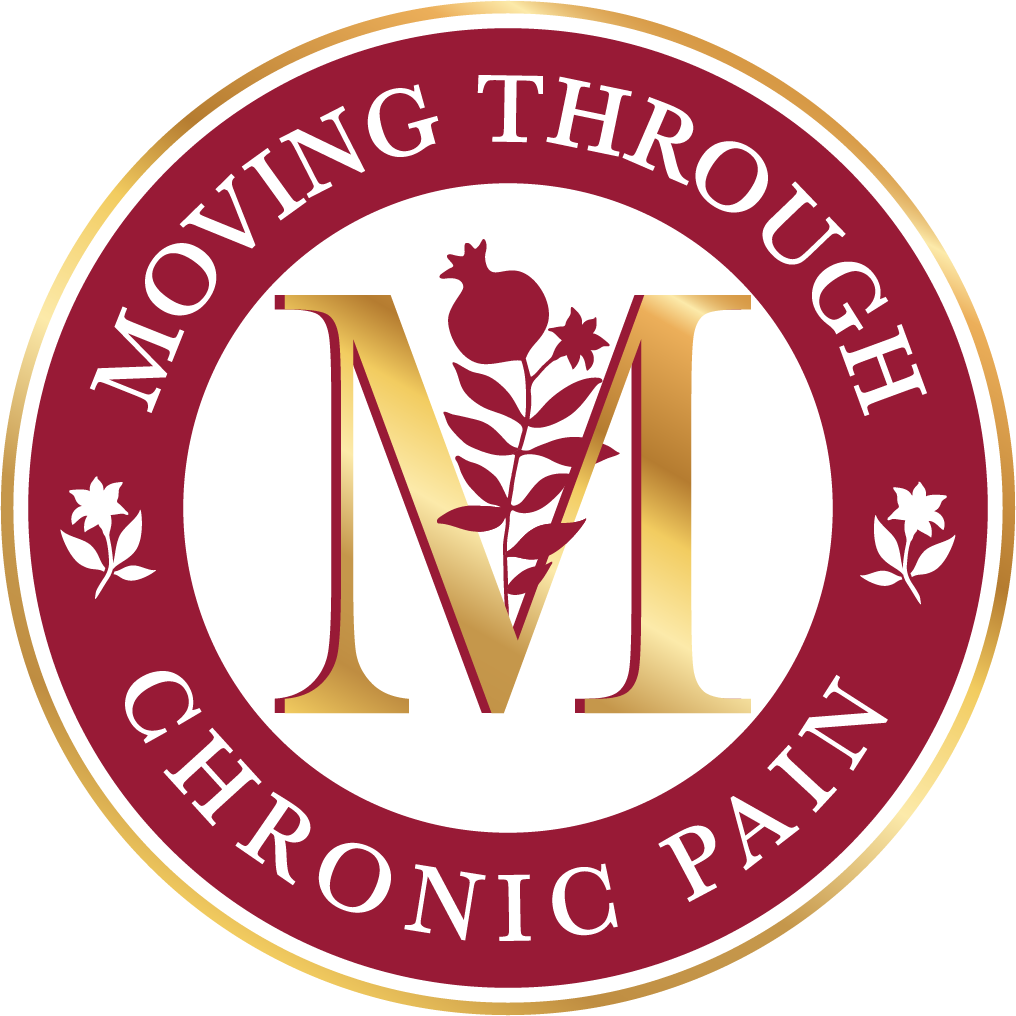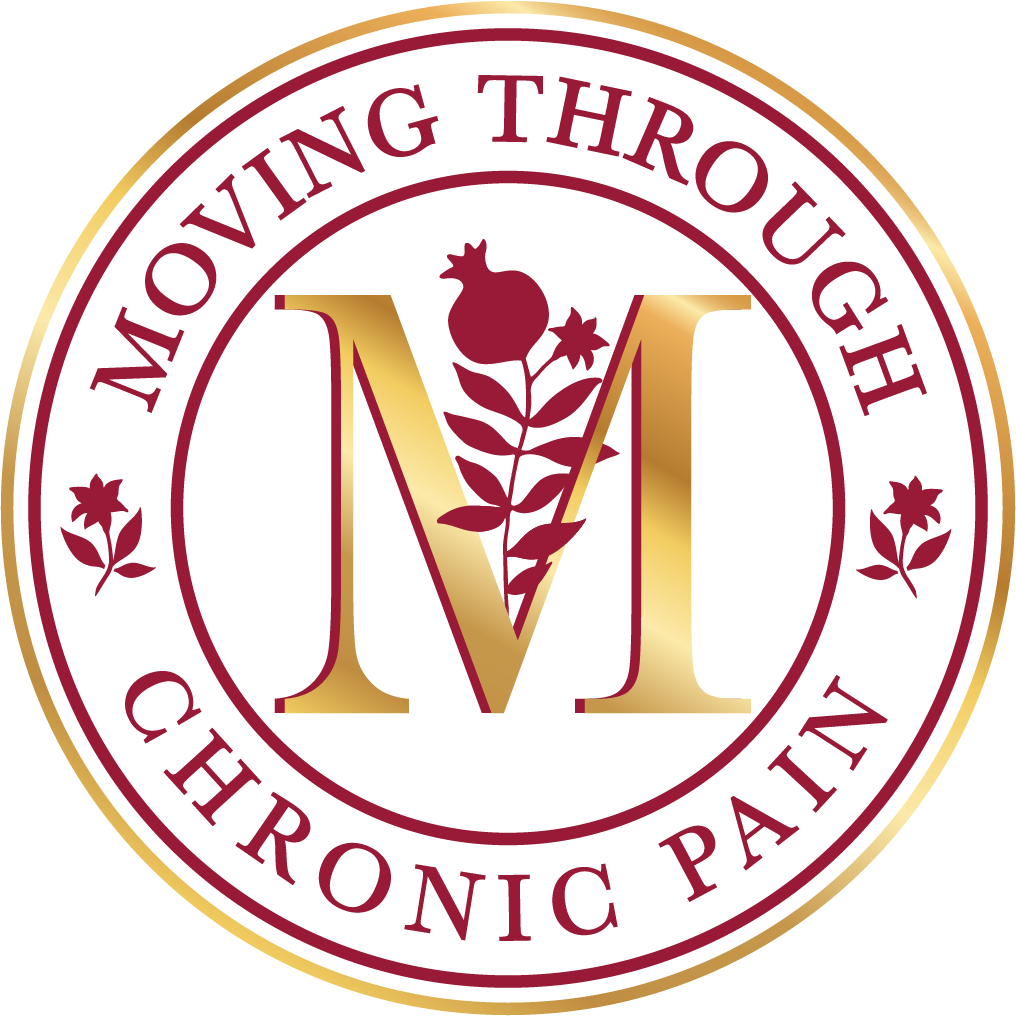HELPING MAKE YOUR CHRONIC PAIN JOURNEY EASIER
The pain cHronic•les
LATEST BLOG ARTICLES

Chronic pain is a complex and often misunderstood condition that affects millions of people around the world. It's important to note that every individual's experience with chronic pain can be unique, and what works for one person may not necessarily work for another. I’ll will be providing some insights into the causes, mechanisms, and challenges of chronic pain based on my personal experience in the hopes that it will help make your chronic pain journey easier.

Michelle Marikos, Founder & CEO
Moving Through Chronic Pain

Diagnoisis and struggle
HELPING MAKE YOUR CHRONIC PAIN JOURNEY EASIER
Why Did It Take Years to Get a Diagnosis?


I sit here, piecing together a presentation on the diagnosis and acceptance of chronic pain, and the same question keeps resurfacing: Why did it take so long to get diagnosed?
It’s heartbreaking to look back—not just at my own journey, but at the stories of so many others living with chronic pain. The years of unanswered questions. The self-doubt. The frustration of bouncing between doctors, only to be told "Everything looks fine" or "maybe it's all in your head."
Struggle to Be Believed: Endometriosis, Adenomyosis, and ADHD
The For most of my life, my body was screaming for help, and no one listened. I struggled with excruciating menstrual pain from an early age—pain that wasn’t “normal” but was constantly dismissed as just bad periods. It wasn’t until I was in my late 30s and 40s that I finally received diagnoses of Endometriosis and Adenomyosis, conditions that had been impacting me for decades. The signs were there, the symptoms were textbook, yet I was ignored.
And then, after years of struggling with focus, executive function, and feeling different from those around me, I finally received a diagnosis of ADHD—another condition that had been apparent for years but overlooked. The system had failed me over and over again, and I can’t help but wonder how different my life would have been if I had been listened to sooner. It’s infuriating. It’s heartbreaking. And I know I’m not alone in this.
The truth is, that the medical system is deeply broken for people living with chronic pain. And here’s why.
The Medical System Was Built for Acute Care, Not Chronic Pain
Our healthcare system excels at treating immediate, measurable problems—broken bones, infections, and life-threatening conditions. But chronic pain doesn’t fit into that model. It’s complex. It doesn’t always show up on scans or blood tests. If there’s no visible “proof,” the system often dismisses it.
The Burden of Proof is on the Patient
If you live with chronic pain, you know what it feels like to be put on trial every time you walk into a doctor's office. You’re expected to explain, justify, and prove your pain. If your test results come back “normal,” you’re left feeling like you failed some unspoken exam.
But pain is real even when it’s invisible. Pain isn’t just what shows up on a scan—it’s what a person experiences. Yet too often, patients are gaslit into questioning their own reality.
Bias and Stigma are Woven into the System
Gender, race, and socioeconomic status—all impact how seriously pain is taken. Women, especially women of color, are more likely to have their pain dismissed as psychological. Those with a history of trauma or mental illness often get labeled as “drug seekers” instead of being treated as patients in need of real care.
For years, I questioned myself because the system questioned me. I internalized the doubt, wondering, Am I overreacting? Am I imagining this? It’s a devastating cycle, one that leaves people feeling unheard and untreated.
Medical Training Doesn't Prepare Providers for Chronic Pain
Many doctors receive little to no training in chronic pain management. The standard approach is to check for an acute issue, prescribe medication, or refer out to specialists who are just as overwhelmed with patients seeking answers. The result? Years of referrals, misdiagnoses, and unnecessary suffering.
We are Taught to minimize our Own Pain
From an early age, we’re told to push through. To tough it out. That pain is normal, that it will pass. And by the time we realize something isn’t normal, we’ve already spent years ignoring the warning signs.
By the time I finally got answers, I had spent so long being dismissed that I didn’t even trust my own body anymore. The diagnosis wasn’t just validation—it was permission to believe myself again.
The Cracks in the System Are Everywhere
Because of the work I do, I see these cracks more clearly than most. Every day, I speak with providers, patients, and advocates who are all trying to navigate a system that wasn’t built for chronic pain. I have the 30,000-foot view, and even with that perspective, the frustration is overwhelming.
So, I can only imagine what it feels like for those who don’t have that vantage point. Those who are left to figure this out on their own, without support, without guidance. Those who are still trapped in the cycle of self-doubt, questioning their own pain because the system refuses to acknowledge it.
So, What Needs to Change?
We need a system that listens first, instead of dismissing pain that doesn’t fit into a pre-set box.
We need providers trained to recognize and treat chronic pain with empathy and understanding.
We need patients to be believed the first time they speak up, instead of after years of suffering.
For those still searching for answers—please know that your pain is real. You are not alone. The system may be broken, but you are not. Keep fighting for the care you deserve.
And to the medical professionals reading this: The most healing thing you can do for a patient in pain is to believe them.
#chronicpain #understandingpain #painawareness #peersforpain #invisibleillness #change #stigma
Michelle Marikos’ fall from a balcony in her early twenties, and her subsequent decades long debilitating chronic pain, inspired her to launch Moving Through Chronic Pain and her PEER™ Method programs to facilitate deeper connections between those living with chronic pain and their community of providers, employers, and family members.

Michelle Marikos, Founder & CEO
Moving Through Chronic Pain

Diagnoisis and struggle
HELPING MAKE YOUR CHRONIC PAIN JOURNEY EASIER
Why Did It Take Years to Get a Diagnosis?


I sit here, piecing together a presentation on the diagnosis and acceptance of chronic pain, and the same question keeps resurfacing: Why did it take so long to get diagnosed?
It’s heartbreaking to look back—not just at my own journey, but at the stories of so many others living with chronic pain. The years of unanswered questions. The self-doubt. The frustration of bouncing between doctors, only to be told "Everything looks fine" or "maybe it's all in your head."
Struggle to Be Believed: Endometriosis, Adenomyosis, and ADHD
The For most of my life, my body was screaming for help, and no one listened. I struggled with excruciating menstrual pain from an early age—pain that wasn’t “normal” but was constantly dismissed as just bad periods. It wasn’t until I was in my late 30s and 40s that I finally received diagnoses of Endometriosis and Adenomyosis, conditions that had been impacting me for decades. The signs were there, the symptoms were textbook, yet I was ignored.
And then, after years of struggling with focus, executive function, and feeling different from those around me, I finally received a diagnosis of ADHD—another condition that had been apparent for years but overlooked. The system had failed me over and over again, and I can’t help but wonder how different my life would have been if I had been listened to sooner. It’s infuriating. It’s heartbreaking. And I know I’m not alone in this.
The truth is, that the medical system is deeply broken for people living with chronic pain. And here’s why.
The Medical System Was Built for Acute Care, Not Chronic Pain
Our healthcare system excels at treating immediate, measurable problems—broken bones, infections, and life-threatening conditions. But chronic pain doesn’t fit into that model. It’s complex. It doesn’t always show up on scans or blood tests. If there’s no visible “proof,” the system often dismisses it.
The Burden of Proof is on the Patient
If you live with chronic pain, you know what it feels like to be put on trial every time you walk into a doctor's office. You’re expected to explain, justify, and prove your pain. If your test results come back “normal,” you’re left feeling like you failed some unspoken exam.
But pain is real even when it’s invisible. Pain isn’t just what shows up on a scan—it’s what a person experiences. Yet too often, patients are gaslit into questioning their own reality.
Bias and Stigma are Woven into the System
Gender, race, and socioeconomic status—all impact how seriously pain is taken. Women, especially women of color, are more likely to have their pain dismissed as psychological. Those with a history of trauma or mental illness often get labeled as “drug seekers” instead of being treated as patients in need of real care.
For years, I questioned myself because the system questioned me. I internalized the doubt, wondering, Am I overreacting? Am I imagining this? It’s a devastating cycle, one that leaves people feeling unheard and untreated.
Medical Training Doesn't Prepare Providers for Chronic Pain
Many doctors receive little to no training in chronic pain management. The standard approach is to check for an acute issue, prescribe medication, or refer out to specialists who are just as overwhelmed with patients seeking answers. The result? Years of referrals, misdiagnoses, and unnecessary suffering.
We are Taught to minimize our Own Pain
From an early age, we’re told to push through. To tough it out. That pain is normal, that it will pass. And by the time we realize something isn’t normal, we’ve already spent years ignoring the warning signs.
By the time I finally got answers, I had spent so long being dismissed that I didn’t even trust my own body anymore. The diagnosis wasn’t just validation—it was permission to believe myself again.
The Cracks in the System Are Everywhere
Because of the work I do, I see these cracks more clearly than most. Every day, I speak with providers, patients, and advocates who are all trying to navigate a system that wasn’t built for chronic pain. I have the 30,000-foot view, and even with that perspective, the frustration is overwhelming.
So, I can only imagine what it feels like for those who don’t have that vantage point. Those who are left to figure this out on their own, without support, without guidance. Those who are still trapped in the cycle of self-doubt, questioning their own pain because the system refuses to acknowledge it.
So, What Needs to Change?
We need a system that listens first, instead of dismissing pain that doesn’t fit into a pre-set box.
We need providers trained to recognize and treat chronic pain with empathy and understanding.
We need patients to be believed the first time they speak up, instead of after years of suffering.
For those still searching for answers—please know that your pain is real. You are not alone. The system may be broken, but you are not. Keep fighting for the care you deserve.
And to the medical professionals reading this: The most healing thing you can do for a patient in pain is to believe them.
#chronicpain #understandingpain #painawareness #peersforpain #invisibleillness #change #stigma
Michelle Marikos’ fall from a balcony in her early twenties, and her subsequent decades long debilitating chronic pain, inspired her to launch Moving Through Chronic Pain and her PEER™ Method programs to facilitate deeper connections between those living with chronic pain and their community of providers, employers, and family members.

Michelle Marikos, Founder & CEO
Moving Through Chronic Pain

